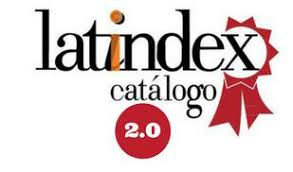THE INTERIOR READING: READER AND BODY
Keywords:
Interior reading, Reader, Body, Text, PhenomenologyAbstract
The purpose of this research is the study of the body as an access to the text. Also, how the text penetrates in the body of the reader, considering it as if would be other. During the reading this subject, from his/her body, is vulnerable to the glance of the text, as if were other. This situation allows the appropriation of the other body by the reader, such a thing happens when a deep stimulation comes from the text as other. Another main object of this study is to understand the reading as happening and embodiment, since in the embodiment of this reader he/she learns, once more, to see the world, the own body, and this fully happens during the “doing to see” the other. From the methodological point of view we try to make a phenomenology of the reader subject, who when meets the philosophical, literary and artistic text (with it and, through it) em-body him/herself to the show he/she already belonged without knowing it or watching it . Finally, we would say that the subject reader is meat (chair as in Merleau Ponty), its ontology is carnal, since it is embodied. The ecstasy of this being is to come out of him/herself perceiving the world of the text that he/she can receive because is embodied, is able to embody the text without coming out of him/her self and without getting loss in his/her reader world, becomes integrated to it, allows to be absorbed in an action-passive passion play. He/she meets in some place with the text world and, in the happening of the reading they establish a common texture.
Downloads
References
Escribano, Xavier. Sujeto encarnado y expresión creadora. Aproximación al pensamiento de Maurice Merleau-Ponty, Cabrils: Prom. Edicions, 2004.
Larios, Vanessa.“Carne: Quiasmo cuerpo-mundo”. Revista A Parte Rei, Nº42. Disponible en: <http://serbal.pntic.mec.es/AparteRei/, 2005
Lévinas, Emmanuel . Humanismo del otro hombre, México: Siglo XX, 2003I.
López Sáenz, Mª Carmen. La fenomenología existencial de M. Merleau Ponty y la sociología. (Página Web) Disponible en: <http://ddd.uab.es/pub/papers/02102862n50p209.pdf>.
López Sáenz, Mª Carmen. “Imaginación carnal en M. Merleau Ponty” Revista de Filosofía, Vol.28. Nº 1, 2003.
Merleau Ponty, Maurice. Lo visible y lo invisible, Seix Barral, Barcelona, 1970.
Merleau Ponty, Maurice.Fenomenología de la percepción, México: FCE, 1957.
Nietzsche, Friedrich, Ecce homo Cómo se llega a ser lo que se es. Madrid: Edima., 1999.
Nietzsche, Friedrich, Schopenhauer como educador, Madrid: Valdemar, 1999.
Nietzsche, Friedrich, Así hablaba Zaratustra. Un libro para todos y para nadie, Barcelona: Edicomunicación, 1999.
Nietzsche, Friedrich, Aurora, Buenos Aires: Ediciones del mediodía, 1967.
Valera-Villegas, Gregorio. “La narración/formación del extraño: lectura/escritura de una bildung fronteriza”.Revista Venezolana de Ciencias Sociales, Vol. 9, Nº2, 2005, pp. 298-316.
Downloads
Published
How to Cite
Issue
Section
License
Copyright (c) 2004 Revista Pilquen. Sección Psicopedagogía

This work is licensed under a Creative Commons Attribution-NonCommercial-NoDerivatives 4.0 International License.
Revista Pilquen, Sección Psicopedagogía sostiene su compromiso con las políticas de Acceso Abierto a la información científica, al considerar que tanto las publicaciones científicas como las investigaciones financiadas con fondos públicos deben circular en Internet en forma libre, gratuita y sin restricciones.
Los trabajos presentados en Revista Pilquen, Sección Psicopedagogía deben ser originales e inéditos y no estar postulados simultáneamente en otras revistas. El envío de todo tipo de colaboración implica la aceptación de las normas editoriales de la revista y la autorización al Comité Editorial para que difunda los trabajos tanto en la revista como en las bases de datos o sistemas de indización en donde se alojan los contenidos de Pilquen.
Los autores que publican en esta revista están de acuerdo con los siguientes términos:
1) Los autores conservan los derechos de autor y garantizan a la revista el derecho de ser la primera publicación del trabajo al igual que licenciado bajo una Creative Commons "Atribución -No Comercial CC BY-NC-SA”, mediante la cual ser permite copiar, reproducir, distribuir, comunicar públicamente la obra y generar obras derivadas, siempre y cuando se cite y reconozca al autor original. No se permite, sin embargo, utilizar la obra ni sus posibles obras derivadas con fines comerciales.
2) Los autores pueden establecer por separado acuerdos adicionales para la distribución no exclusiva de la versión de la obra publicada en la revista (por ejemplo, situarlo en un repositorio institucional o publicarlo en un libro), con un reconocimiento de su publicación inicial en esta revista.
3) El o los autores no recibirán compensación monetaria de Pilquen por el uso del material contenido en el artículo; así como tampoco asumirán ningún costo de publicación de los mismos.












